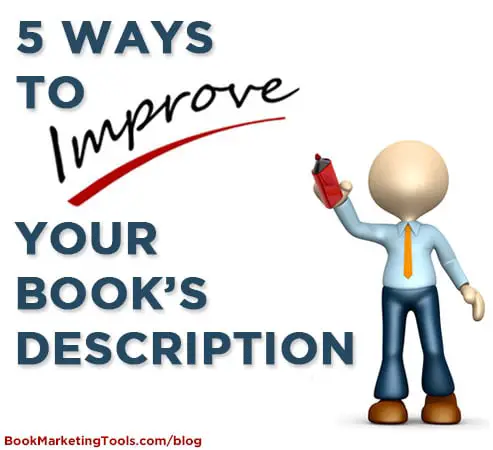You spend months (or even years) writing the book, you get it formatted (or find out how to), you get a cover, you learn how to self-publish… then you enter a quick description about the book and hit publish. Unfortunately, your book description is probably not as good as it can be, but luckily with self-publishing, you can change it instantly. In this guest post, author Kevin Wood shares some great tips on how to improve your book’s description to help you to sell more books.
Most book descriptions, even books published from major publishing houses, are severely lacking. If you’re an author who’s trying to sell more books then focusing on your book’s description is a great place to start.
Your book cover and description work together to get your book into the hands of new readers. Below we’ll dive into a repeatable process that will improve your book’s description and turn casual visitors into new readers.
Where the Standard Book Description Fails
Most authors write a few sentences describing the general topic of their book and call it good. Other authors write even fewer words and just copy and paste the description on the back of their book jacket.
Some authors with very large followings can get away with this. But, if you’re looking to grow your readership and ensure a steady flow of book sales, then it’s time to make your book’s description work for you.
The Improved Book Description Formula
When crafting your new and improved book description try to create from the perspective of a publishing house. Write as if you’re going to start a publishing company, and you need the sales from this book to keep you afloat.
The steps below will help you create a book description that hooks readers and entices them to buy.
1. Craft a Compelling Headline
Your headline needs to stand out by making a strong promise that your book can deliver on. Nothing is worse than an empty promise. If you’re a non-fiction writer then you’re generally helping solve a problem.
Speak to this problem in a way that makes your readers curious enough to keep reading.
2. Speak to the Reader’s Needs
Once you’ve hooked your reader with your headline it’s time to show your potential reader you understand their problems. Speak to their needs and fears, show your reader that you care for them and understand them on a deep level.
3. Address the Problem
Once the reader feels at home and trusts you, then you can speak to the real problem your book solves. If you can, this is the point where you can bring in an example from your reader’s life, this will bring the reader further into your story.
4. Illustrate Why Your Book Is the Solution
Now that you’ve hit on all the pain points you can then show why your book is the perfect solution. Show them how your book will take them on the journey from point A to point B.
You can also introduce bullet points at this phase and describe the benefits your reader will receive in their lives.
5. Incorporate a Call-to-action
Finish out your book’s description with an enticing call-to-action. A lot of authors leave their readers hanging at this point. Something as simple as “scroll up and click buy to start reading”, will work.
Your book’s description is an important part of generating long-term sales. By implementing the steps above you’ll have a revamped book description that will work on your behalf to generate new sales.
Kevin Wood is a published author & poet who helps other authors build movements around their books. Explore the studio here.

